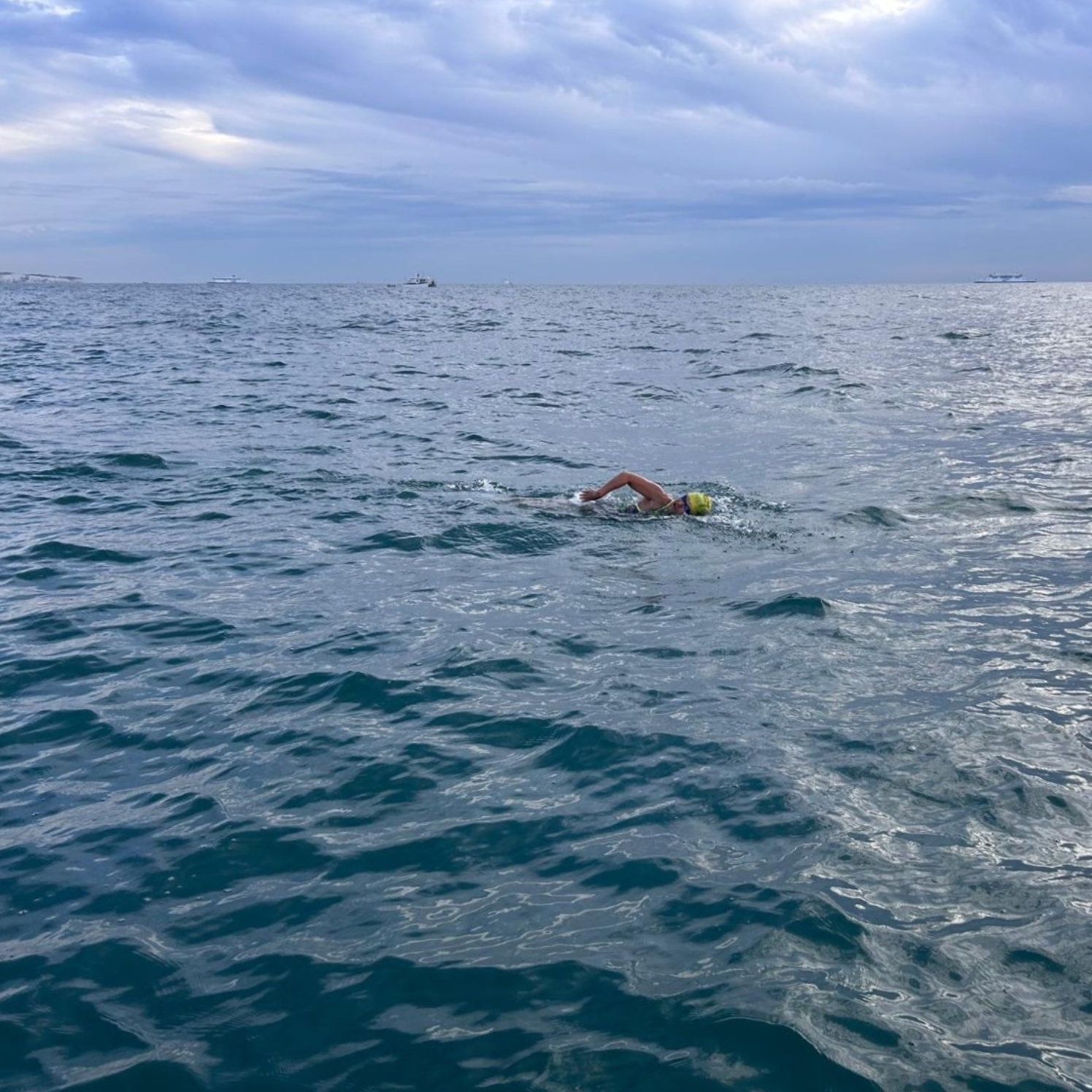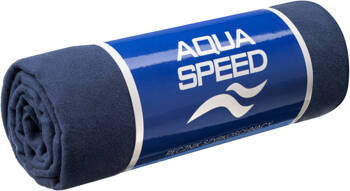Apparently, it’s possible to fall in love with swimming. Alicja Giedryś’s adventure proves that you can also fall in love with the English Channel. This love, however, was tested by both her body and the Channel’s unpredictability. She did it, though, and now she shares her experience with our magazine.
Simply Swimming Across the English Channel
Not everyone can say to themselves, “I’ll swim across the English Channel.” Why did you say it to yourself?
I didn’t say it to myself. I took formal steps to make it happen, but most of the time, I simply thought about just swimming. For as long as I could. Ideally, to France.
- I wanted to experience the changing water conditions throughout the stretch
- I wanted to see the spot where the Channel has its cosmic blue hue
- I wanted to find out if English jellyfish are different from French ones
- I wanted to know what it feels like to be in the middle of that vast space, knowing I got there on my own strength
That was my "why."
I WASN’T LOOKING FOR A CHALLENGE
This decision came more from admiration for the Channel’s beauty and a desire for the experience than from a need to accomplish something.
With a Disability
For recreational swimmers, the idea of taking on the challenge of crossing the English Channel doesn’t usually exist in their minds. What journey in the water did you have to go through before the idea came to you?
Since I was a child, I competed in swimming events for people with disabilities. First, I had to realize that I was too slow and too old to keep competing in swimming pools, yet I still had an unfulfilled desire for swimming. That’s when open water came into the picture. Three kilometers, five kilometers, seven kilometers, then ten kilometers, then Gdynia-Hel... And somewhere in the midst of all that, I fell in love with the Channel.
I definitely wasn’t looking for such a challenge. It may not sound very athletic, but this decision was more about admiration for the beauty of the Channel and a desire for the experience than about achieving something. First, I fell in love with the body of water itself. Then, I found the courage to go there and swim.
Swimming in Harmony with Values
Practice makes perfect, but it doesn’t seem like perfection is the goal here — or is it?
I wanted to do everything aligned with my values to experience the Channel for as long as possible. To achieve that, I needed my body — even with its disabilities — to be as strong as possible, and a healthy mindset capable of responding to the challenges of the swim. Training was essential for that.
I didn’t want to blindly sacrifice everything. Maintaining healthy boundaries and not treating myself harshly during the process was important to me.
And I don’t think the word “champion” exists in my personal vocabulary.
Training for Swimming Across the English Channel
What did your training look like — in the water, on land, and mentally — to accomplish this feat?
Pool: From October to May, I trained 10 times a week for 1.5 hours each session, plus occasional “crazy” sessions of 12, 8, or 6 hours. Sometimes I’d do 6–8 hours in one day and 4–6 hours the next — a combined endurance combo.
Bay: From winter to spring, I swam twice a week; in the summer and through half of autumn, around six times a week.
Land: Three times a week.
Mind: A lot of mindfulness, meditation, concentration exercises, working with a sports psychologist, and self-care.
Nutrition: This was particularly difficult for me because I tried to gain weight this year. That was a challenge in itself.
Did this allow me to cross the Channel? I don’t know. Maybe you don’t need to swim so much. Maybe more land training is the key. I feel like there’s no single recipe for success.
Open water has so many variables… You can’t control all the factors that influence whether you’ll make it across. This time, the Channel allowed me to cross — or at least didn’t interfere too much.
Mini Guide for Swimming Across the English Channel
If someone asks you how to swim across the Channel, what would you say? What serious advice would you give to help someone make a "good" decision?
I would say: fall in love with it first. But I also know it’s possible to cross the Channel without love. So, operationally, here’s my advice:
1. Ensure it’s for you. Make sure you genuinely want to do this for yourself and that you’re already comfortable swimming in choppy, cold water for several hours.2. Learn the rules. Familiarize yourself with the essentials, such as what a spring tide versus a neap tide is, what "third position booking" means, and other logistics. Check out FAQs like this: Channel Swimming Association FAQ.3. Understand water temperatures. Analyze the water conditions. In June, the water is brisk, and even in July, it rarely exceeds 17°C.4. Connect with boat captains. Reach out to pilots associated with the Channel Swimming & Piloting Federation (CSPF Pilots) or the Channel Swimming Association (CSA Pilots).Ask about available dates, carefully review the contract, reserve your slot, and pay the deposit. Bookings are usually made 2–2.5 years in advance.
5. Train and test yourself. Practice swimming in challenging conditions. If you’ve only swum in a wetsuit before, put it away. Test your food choices, team dynamics, and night swimming skills.6. Research and connect. Read books, watch videos, and talk to people who’ve attempted or completed the swim. Their experiences are invaluable.7. Remember your "why." Keep your motivation in focus. Remind yourself why you want to do this.8. Take care of yourself. Enjoy the journey and extract as much as you can from the process.
Swimming across the English Channel isn’t just about crossing a body of water; it’s a personal and transformative adventure.
---
Interview by: Maciej Mazerant / Editor-in-Chief, AQUA SPEED Magazine












